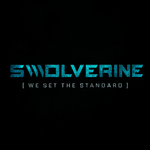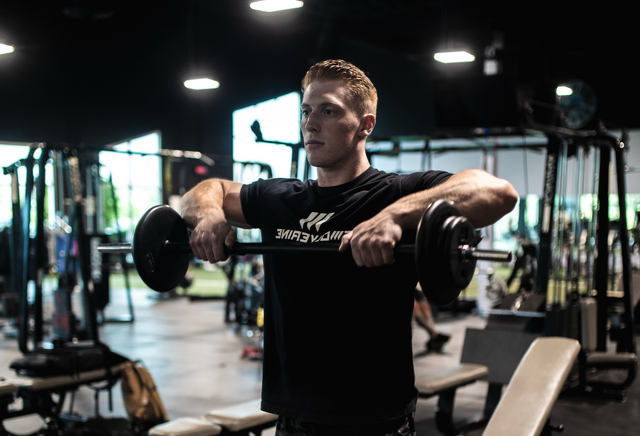Introduction: The PCT Controversy Around Proviron
Proviron (mesterolone) is one of the most misunderstood compounds in post-cycle therapy (PCT) discussions. As a synthetic DHT-derived androgen, it offers several benefits that appeal to athletes and bodybuilders coming off a steroid cycle—like enhanced libido, reduced estrogenic symptoms, and improved mood. But despite its perceived safety and lack of strong suppressive action, its role in true hormonal recovery remains controversial.
Some argue that because Proviron doesn’t directly suppress LH or FSH, it’s ideal for bridging or supporting PCT. Others warn that introducing any exogenous androgen during recovery—even one with low anabolic activity—can interfere with natural testosterone production and give users a false sense of hormonal stability.
This article explores the mechanisms, benefits, and risks of using Proviron during PCT. We’ll also compare it to more established recovery agents like Tamoxifen, Clomid, and DHEA, and provide clear recommendations on when (if ever) it should be used to support recovery after a cycle.
What Is Proviron?
Proviron (Mesterolone) is a synthetic oral androgen derived from dihydrotestosterone (DHT). Originally developed for clinical use in treating male hypogonadism and infertility, it has become popular in the bodybuilding world for its androgenic effects without significant anabolic impact.
Unlike most oral steroids, Proviron is not 17α-alkylated, meaning it has minimal liver toxicity and doesn’t convert to estrogen. It binds strongly to androgen receptors and to sex hormone-binding globulin (SHBG)—increasing the availability of free testosterone in circulation.
→ Key Characteristics of Proviron:
-
Androgenic: High
-
Anabolic: Very low
-
Estrogenic activity: None (does not aromatize)
-
Suppressive to LH/FSH: Minimal to none at low doses
-
Form: Oral (25–50 mg/day typical dose range)
Because of its non-suppressive profile, Proviron is sometimes mistaken as a PCT compound. While it can enhance libido and mood during recovery phases, it does not stimulate the hypothalamic-pituitary-testicular axis (HPTA)—meaning it won’t help restore natural testosterone production on its own.
For a full breakdown, visit How Proviron Works: The Ultimate Guide to Mesterolone
What Happens During PCT (And Why It Matters)
Post cycle therapy (PCT) is a critical phase for anyone coming off a suppressive anabolic steroid cycle. During your cycle, external androgens (like testosterone, trenbolone, or Dbol) shut down natural testosterone production by suppressing the hypothalamic-pituitary-testicular axis (HPTA). As a result, levels of LH (luteinizing hormone) and FSH (follicle-stimulating hormone) plummet, and endogenous testosterone crashes.
→ The Goal of PCT
The primary purpose of PCT is to:
→ Restart natural testosterone production
→ Normalize LH and FSH levels
→ Prevent estrogen rebound or suppression-related side effects
→ Maintain lean muscle mass and prevent post-cycle fat gain
→ How PCT Works
Most PCT protocols include selective estrogen receptor modulators (SERMs) like:
-
Tamoxifen (Nolvadex): Blocks estrogen receptors at the hypothalamus to signal more LH release
-
Clomiphene (Clomid): Stimulates LH and FSH to reboot natural testosterone
-
DHEA: Supports mild testosterone production and adrenal function
-
ZMT: Provides herbal support for testosterone recovery and cortisol reduction
These compounds target the HPTA, which Proviron does not. Understanding this distinction is key to determining whether Proviron belongs in a true recovery protocol.
Can Proviron Be Used in PCT? Mechanism and Controversy
Proviron is often suggested as a potential PCT support compound because it’s one of the few androgens that doesn’t significantly suppress LH or FSH at moderate doses. In fact, it may even improve libido, enhance mood, and increase free testosterone by lowering SHBG (sex hormone-binding globulin). But the story is more nuanced.
→ Why It’s Considered for PCT
-
Non-aromatizing: Won’t increase estrogen or cause rebound
-
No direct suppression: At clinical doses, Proviron does not heavily suppress gonadotropins
-
Androgenic support: Helps with libido, mood, and motivation during the low-testosterone phase post-cycle
-
SHBG reduction: Increases the ratio of free testosterone by binding to SHBG and freeing up bound testosterone
→ The Problem: It’s Still an Exogenous Androgen
Despite these benefits, Proviron is still a synthetic DHT-based compound. It provides androgenic effects without stimulating the HPTA, which can lead to:
→ A false sense of hormonal recovery
→ Suppression of LH/FSH recovery through negative feedback at the hypothalamus
→ Delayed natural testosterone production, even if symptoms temporarily improve
“Although mesterolone is not significantly suppressive in isolation, its exogenous androgenic activity can interfere with HPTA recovery when used during post-cycle therapy.”
— Schlüter, Pharmacology & Therapeutics
So while Proviron doesn’t shut you down like traditional steroids, its use during PCT is controversial because it can mask suppression symptoms without restoring endocrine function.
Potential Benefits of Using Proviron in PCT
Although Proviron (Mesterolone) does not actively stimulate endogenous testosterone production, it has unique properties that may support subjective recovery, improve quality of life, and help manage estrogen-related symptoms during post cycle therapy (PCT). Below is an expanded breakdown of how and why some athletes use Proviron in a supportive role during PCT—and what the science says about it.
→ 1. Increases Free Testosterone by Lowering SHBG
Proviron’s most well-documented effect is its high affinity for SHBG (sex hormone-binding globulin). SHBG binds circulating testosterone, making it unavailable for androgen receptor activation. By occupying SHBG, Proviron increases the free (bioavailable) portion of testosterone, even if total testosterone levels remain suppressed during early PCT.
“Mesterolone administration in men leads to a marked reduction in serum SHBG, thereby increasing the proportion of free testosterone.”
— von Eckardstein et al., The Journal of Clinical Endocrinology & Metabolism
This effect may enhance recovery indirectly by maximizing the utility of what little testosterone is available after a suppressive cycle.
→ 2. Supports Libido, Mood, and Cognitive Function
One of the most common symptoms of low testosterone during PCT is a sharp decline in libido and emotional stability. Proviron, being a pure androgen with negligible anabolic or estrogenic activity, binds to androgen receptors in the brain and sexual organs—helping restore:
→ Sex drive
→ Mood balance
→ Motivation
→ Mental clarity
“Androgens like mesterolone can exert psychoactive effects independent of testosterone, improving mood and sexual function in hypogonadal men.”
— Schrader et al., Pharmacopsychiatry
This makes Proviron especially appealing during PCT, when androgen levels are still recovering but estrogen may remain elevated.
→ 3. Anti-Estrogenic Action Without Aromatase Inhibition
Proviron does not inhibit the aromatase enzyme, but it has anti-estrogenic effects at the receptor level. It competes with estradiol for binding at estrogen receptors, which may help mitigate symptoms like:
-
Gyno sensitivity
-
Mood swings
-
Water retention
Unlike aromatase inhibitors (AIs), Proviron helps control estrogenic effects without crashing estradiol, which is important for mood, joint health, and libido during recovery.
“Mesterolone has been shown to displace estradiol from estrogen receptors, particularly in reproductive tissues, supporting its use as an anti-estrogenic agent in men.”
— Dusterberg et al., Andrologia
This receptor-level competition makes Proviron a useful tool in managing estrogen rebound—especially when coming off aromatizing compounds like testosterone or Dianabol.
→ 4. Cosmetic and Performance Benefits
During PCT, many users feel flat, bloated, or soft due to hormone fluctuations. Proviron’s strong androgenic effects promote a dry, hard, vascular look, helping preserve the visual aesthetic achieved during a cycle. It:
→ Reduces water retention
→ Enhances muscle density
→ Supports a lean, defined appearance when estrogen is elevated and natural testosterone is suppressed
It’s often stacked with PCT support supplements like:
-
POST to aid muscle retention and glycogen recovery
-
WHEY ISOLATE to preserve protein synthesis
-
ZMT for hormone regulation and cortisol support
→ Summary of Potential Benefits:
| Category | Proviron Effect |
|---|---|
| Free Testosterone | Increases bioavailability by binding SHBG |
| Libido & Mood | Enhances sexual function, mood, and motivation |
| Estrogen Control | Receptor-level anti-estrogenic effects |
| Aesthetic Retention | Supports dry, vascular appearance post-cycle |
| Recovery Experience | Improves quality of life during hormonal transition |
While these benefits can improve how you feel during PCT, it's important to remember: Proviron does not stimulate LH or FSH. It’s not a substitute for recovery agents like Tamoxifen or Clomid, but rather a supportive addition that can ease symptoms if used properly.
Risks and Drawbacks of Proviron in PCT
Despite its potential benefits, Proviron is not a true recovery agent—and when used improperly during post cycle therapy (PCT), it may actually interfere with natural hormonal restoration. Understanding its risks is critical to avoid compromising your HPTA (hypothalamic-pituitary-testicular axis) recovery.
→ 1. Proviron Can Mask Suppression Symptoms
Because Proviron enhances mood, libido, and perceived energy, it may create a false sense of recovery during a time when LH and FSH remain suppressed. This is particularly dangerous because:
→ You may feel “normal” while still biochemically shut down
→ Natural testosterone production may not fully restart
→ Estrogen rebound or testicular atrophy may go unnoticed
“Exogenous androgens like mesterolone can maintain subjective well-being while delaying the physiological recovery of gonadotropins and endogenous testosterone.”
— Bagatell & Bremner, The Journal of Clinical Endocrinology & Metabolism
→ 2. No LH or FSH Stimulation
Unlike SERMs such as Tamoxifen or Clomid, Proviron does not stimulate:
-
LH (Luteinizing Hormone)
-
FSH (Follicle-Stimulating Hormone)
These are the key hormones responsible for signaling the testes to resume natural testosterone and sperm production. Without their activation, true endocrine recovery is stalled.
→ 3. May Delay HPTA Restart
Even though Proviron is weakly suppressive, it still exerts exogenous androgenic feedback on the hypothalamus. This can reduce the body’s own drive to produce LH and FSH, especially if taken at high doses (50+ mg daily) or for extended periods.
“Any exogenous androgen, even those considered weak or non-suppressive, can exert negative feedback on the HPTA and inhibit gonadotropin release.”
— Nieschlag et al., Andrology
→ 4. Androgenic Side Effects
Because Proviron is a pure androgen, side effects may still occur, especially in genetically sensitive users:
-
Hair thinning or male pattern baldness (due to DHT activity)
-
Prostate enlargement in older men
-
Acne or oily skin
-
Agitation or irritability (rare but possible at higher doses)
These risks are increased when Proviron is used in place of real PCT medications or extended beyond the standard 4–6 week post-cycle window.
In summary, while Proviron may improve how you feel during PCT, it can undermine the physiological recovery process. It should never replace SERMs, and its use must be carefully weighed against your cycle, suppression level, and long-term goals.
When (If Ever) Should You Use Proviron in PCT?
Using Proviron during post cycle therapy is a decision that must be made with caution. In most cases, it’s not necessary and not ideal for HPTA recovery. However, there may be limited scenarios where it could serve a supportive role—if used correctly and alongside a proper PCT protocol.
→ When It Might Make Sense
-
Mild Cycles with Minimal Suppression
If you’ve completed a cycle with low suppression—for example, a short run of Primobolan, Anavar, or SARMs—you might consider adding a low dose of Proviron (25 mg/day) for:
→ Libido and mood stabilization
→ Cosmetic benefits (hardness, dryness)
→ Estrogen control in absence of aromatase inhibitors
Important: This should only be considered alongside a proper PCT base of Clomid or Tamoxifen.
-
Bridging Between Cycles
Some users employ Proviron during a “cruise” or bridge phase to help maintain a lean, dry look without heavy suppression. While this is not technically PCT, it is a scenario where Proviron might be used when recovering partially between more aggressive cycles. -
Older Males With Low Testosterone
In men already on the borderline of hypogonadism, especially over age 40, Proviron may support sexual health and androgenic tone post-cycle, particularly if full HPTA recovery is unlikely. This, again, must be managed by a clinician or under regular bloodwork.
→ When It Should Be Avoided
-
During PCT from suppressive compounds like Testosterone Enanthate, Trenbolone, Dianabol, or Deca-Durabolin
-
As a replacement for SERMs like Tamoxifen or Clomid
-
In younger users relying on full hormonal recovery for long-term health
-
Without bloodwork confirming LH, FSH, and free testosterone recovery
→ Better PCT Support Options
If you’re looking for support during recovery, consider pairing your PCT protocol with:
-
Tamoxifen (Nolvadex) — Clinically proven to boost LH and testosterone
-
[Clomid (Clomiphene)] — Often used with Tamoxifen for full-spectrum recovery
-
ZMT — Supports sleep, stress, and hormone balance
-
DHEA — Mild adrenal support and hormonal precursor
-
POST — Helps retain muscle and support inflammation control
In summary: Proviron should not be your main PCT agent, but it may offer value in very specific cases—never as a substitute, only as an adjunct. Next: → Legal Status and Testing Considerations.
Legal Status and Testing Considerations for Proviron
→ Is Proviron Legal?
Proviron (Mesterolone) is classified differently depending on where you live:
-
United States: Proviron is a Schedule III controlled substance, meaning it is illegal to possess or use without a prescription under the Anabolic Steroid Control Act. It is rarely, if ever, prescribed in modern U.S. medical practice.
-
United Kingdom: Proviron is a prescription-only medicine, though it is no longer commonly dispensed through the NHS.
-
Canada: Classified as a Schedule IV drug, legal only with a prescription.
-
Australia: Listed as a Schedule 4 prescription drug—possession without a prescription is illegal.
Despite being originally developed for legitimate medical purposes, its limited therapeutic use today has made Proviron widely available only through black market or research chemical suppliers, increasing the risk of contamination or underdosed products.
→ Drug Testing and Detection Time
Proviron is detectable on drug tests—especially WADA-sanctioned tests for athletes. It is included in the World Anti-Doping Agency (WADA) prohibited substances list under the category of anabolic agents.
-
Detection Window: Proviron has a half-life of ~12 hours, but its metabolites can be detected in urine for 10–14 days or longer depending on dose and duration.
-
Test Type: Urinalysis using gas chromatography/mass spectrometry (GC/MS) or LC/MS-MS
“Mesterolone is prohibited at all times (in- and out-of-competition) under WADA’s anabolic agent category.”
— WADA Prohibited List, 2025
This makes Proviron a poor choice for tested athletes—even during PCT—since it can trigger positive tests and potentially long suspensions.
If you're considering Proviron during recovery, it’s important to balance the legal risk, availability, and testing implications—especially if you're subject to military, law enforcement, or athletic testing protocols.
Conclusion: Should You Use Proviron During PCT?
Using Proviron in post cycle therapy comes down to a critical distinction: it can help you feel better, but it won’t help you recover your natural testosterone production.
Let’s recap:
→ What Proviron Can Do
✓ Increase free testosterone by lowering SHBG
✓ Improve libido, mood, and mental clarity
✓ Provide anti-estrogenic support without crashing estradiol
✓ Enhance cosmetic appearance (dry, hard, vascular look)
→ What Proviron Cannot Do
✘ Stimulate LH or FSH
✘ Restart endogenous testosterone production
✘ Replace Tamoxifen or Clomid
✘ Guarantee long-term hormonal balance
In short, Proviron may play a supportive role—but never a central role—in PCT. It’s best reserved for:
-
Advanced users with prior experience
-
Mildly suppressive cycles
-
Bridging or aesthetic purposes (not full recovery)
-
Stacks that already include SERMs and bloodwork monitoring
If you're serious about recovery, your core PCT protocol should always center on clinically supported compounds like Tamoxifen, Clomid, or both, alongside support supplements like ZMT, DHEA, and POST.
For a full breakdown of how Proviron works mechanistically, check out How Proviron Works: The Ultimate Guide To Mesterolone.
And if you’re weighing Proviron against other mild or DHT-based androgens, explore these comparisons:
Bottom line: Proviron is not a PCT recovery drug—but if used intelligently and cautiously, it might ease the transition off-cycle, improve how you feel, and support your return to natural function.
FAQ: Proviron in PCT
→ Is Proviron enough for PCT on its own?
No. Proviron cannot stimulate LH or FSH, which are critical for restoring natural testosterone production. It does not replace Tamoxifen, Clomid, or other proper PCT compounds.
→ Can I combine Proviron with Tamoxifen?
Yes. This is one of the most common ways Proviron is used during PCT. Tamoxifen stimulates LH/FSH for recovery, while Proviron may support mood, libido, and free testosterone by lowering SHBG. Use low to moderate doses (25–50 mg/day) only under a structured protocol.
Learn more in Tamoxifen For Men
→ Will Proviron shut me down?
While it’s weakly suppressive, high doses or extended use may delay full HPTA recovery. Proviron is not known for harsh suppression, but it still sends androgenic feedback to the hypothalamus.
→ How long can I take Proviron during PCT?
If used, limit to 3–4 weeks post-cycle, ideally during weeks 2–5 of PCT, when natural testosterone is still low but SERMs are active. Avoid using it beyond 4–6 weeks unless supervised by a medical professional.
→ Is Proviron safe for natural athletes?
No. Proviron is banned by WADA and other testing agencies. It will trigger a positive result on drug tests even in low doses and short cycles. Athletes subject to testing should avoid it entirely.
→ Are there safer alternatives?
Yes. For natural libido, SHBG reduction, and hormonal support during recovery, consider:
-
ZMT — clinically dosed ingredients for hormone regulation
-
DHEA — mild hormonal precursor for adrenal support
-
POST — recovery support for inflammation and muscle retention
If you’re unsure whether Proviron is right for your PCT plan, speak with a medical professional and always monitor with bloodwork. For more guidance on building your cycle, recovery, and stacking strategy, visit our in-depth guides on performance-enhancing compounds.







